#pdp-1
Explore tagged Tumblr posts
Text
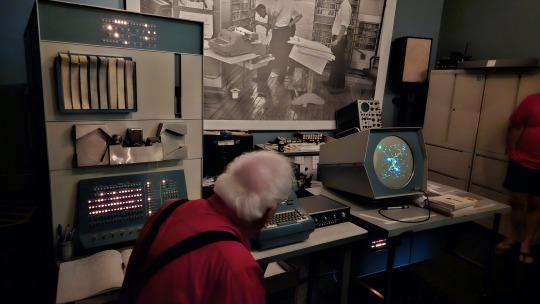
The Computer History Museum's Digital Equipment Corporation PDP-1 playing Space War!
#vcfwxviii#vcf west xviii#vintage computer festival west xviii#commodorez goes to vcfwxviii#pdp-1#computer history museum
32 notes
·
View notes
Text
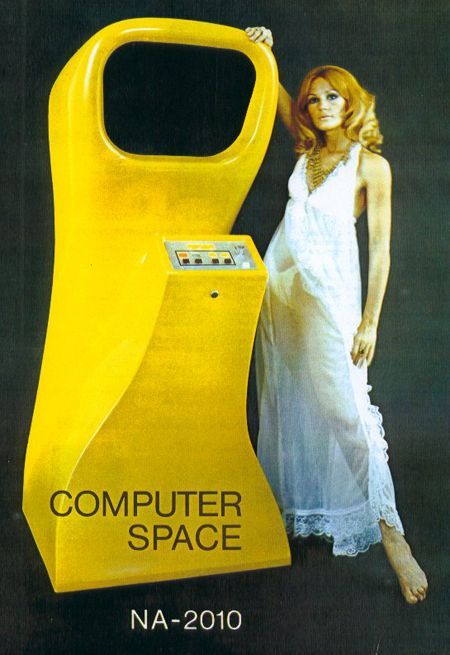
COMPUTER SPACE (1971)
"In 1971, a Californian entrepreneur named Nolan Bushnell decided to deliver Spacewar! to the masses. Computer Space—essentially Spacewar repackaged—was the first modern coin-operated arcade game."
SPACE WAR! (1962)
Spacewar! is a space combat video game developed in 1962 by Steve Russell in collaboration with Martin Graetz, Wayne Wiitanen, Bob Saunders, Steve Piner, and others. It was written for the newly installed DEC PDP-1 minicomputer at the Massachusetts Institute of Technology.

"the popularization of video games is better traced to Steve Russell, a graduate student who studied at MIT in the early 1960s. Russell is commonly credited for creating Spacewar with the help of collabora- tors. In Spacewar, each competitor controlled a spaceship. The players navigated the ships on a flat plane around a central sun (with simulated gravity) and attempted to destroy each other with missiles. In an interview with a reporter from Rolling Stone magazine, Russell described Spacewar not as a game, but as a way to “simulate a reasonably complicated physical system and actually see what is going on.”
Came across this whilst researching my book. Thought it was cool.
Quotes from Virtual Justice: The New Laws of Online Worlds by Greg Lastowka (2011) Read more about Computer Space at the Online Museum of play
#spacewar#space war#computer space#retro gaming#arcade games#retrocomputing#pdp-1#video games#history#the web was a sidequest#research#advertising#1970s#1970s history
5 notes
·
View notes
Photo
Computer History Museum in Mountain View CA has one in working order, and they put on demonstrations of SpaceWar! every first and third Saturday of the month.

Digital Equipment Corporation’s PDP-1, 1959.
It only sold 59 units, but it was one of the most influential computers ever designed, as it had a terminal you sat down at instead of requiring a staff to fiddle with punchcards. All 59 units were sold to academia or smaller buyers, so it encouraged tinkering.
1K notes
·
View notes
Text
3 artist 1 base trend but only 1 artist who practiced different styles



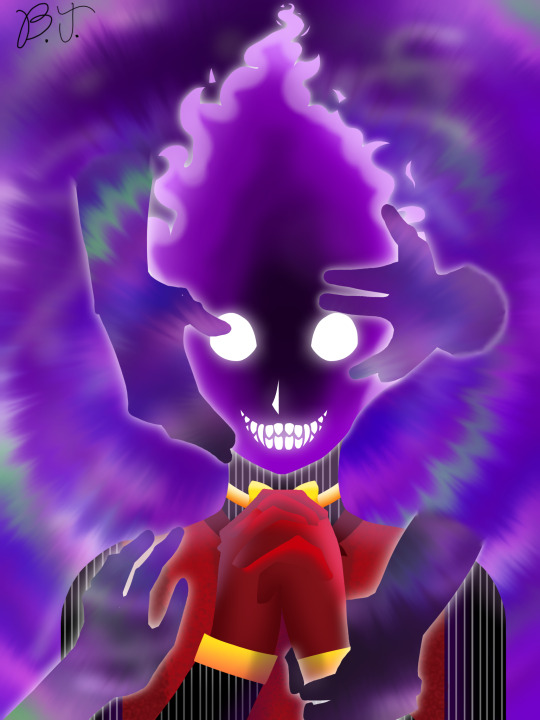
#Dylan’s picture was just a little quirky#(it’s so bad 😭)#prettydepressedproductions#pdp#citruswashere#in light of their most recent episodes#1 base 3 artist#fnaf universe#thefamousfilms
37 notes
·
View notes
Text
Un día como hoy (6 de diciembre) en la computación y videojuegos

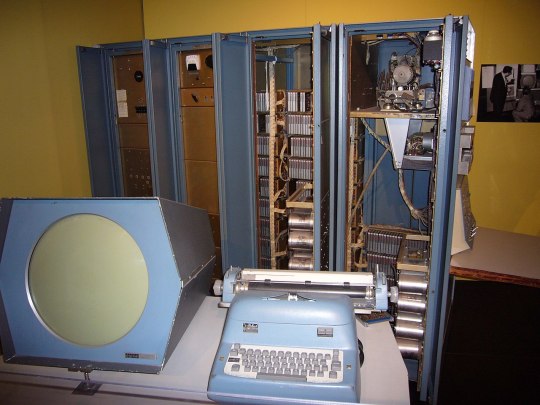
El 6 de diciembre de 1961, los ingenieros de Digital Equipment Corporation Steve "Slug" Russell, Martin "Shag" Graetz y Wayne Wiitanen del ficticio "Instituto Hingham" concibieron el juego Spacewars!, con la intención de implementarlo en un DEC PDP-1 en el Instituto de Tecnología de Massachusetts. Después de que Alan Kotok obtuviera algunas rutinas de seno y coseno de DEC, Russell comenzó a codificar, y en febrero de 1962 había producido su primera versión. Se necesitaron aproximadamente 200 horas de trabajo para crear la versión inicial. Las características adicionales fueron desarrolladas por Dan Edwards, Peter Samson y Graetz. #retrocomputingmx #decpdp1 #spacewars #retrogaming #gaming
0 notes
Text
NICHE RANT
i love the poorly drawn pokemon line that @otiksimr does here on this stupid hellscape
BUT GOD CHRIST THE LACK OF UNDERSTANDING HURTS MY BRAIN
poorly drawn doesn't mean bad or shit or unskilled
poor means lacking. meaning they barely tried. sometimes the best stuff is stuff you barely try at/for.
it's not bad. it lacks detail, and it lacks time and effort, but it's good art, and you know why??????
because all art is good. and to a certain extent, all art is poorly drawn. you are always lacking a skill or a technique that could be learned. nothing is perfect or expertly drawn. fuck man
i'm tired of words having connotations. other than slurs, most words just serve a purpose and purpose aren't inherently Anything at all
this is only tangentially about the poorly drawn pokemon series, and moreso about the way language and art intersect and folks' very rigid outlooks on both, despite both being flexible asf
thank u for coming to my ted talk
#rant#stupid dumb shit#not really about anyone or anything#jus smth i think abt Every time i see an otiksimr pdp post#every time at least 1 note is “but this isn't poorly drawn at all!!!!”#it eats me alive
1 note
·
View note
Text
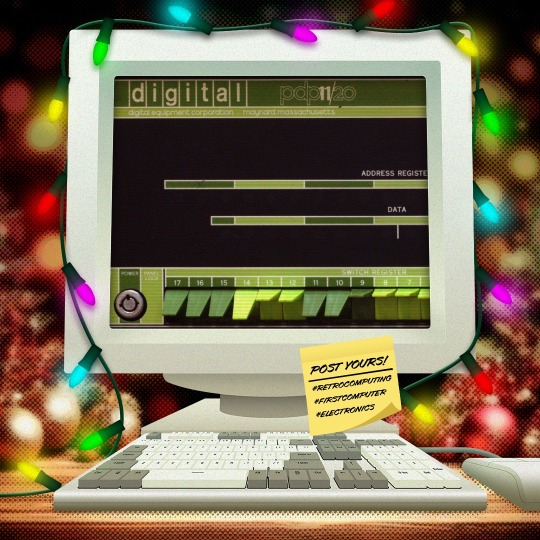
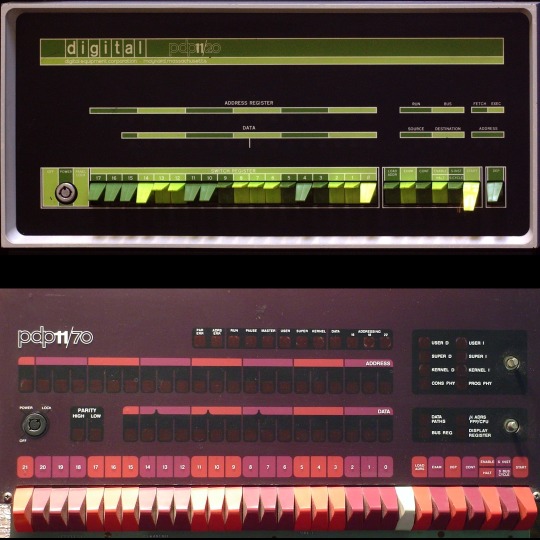
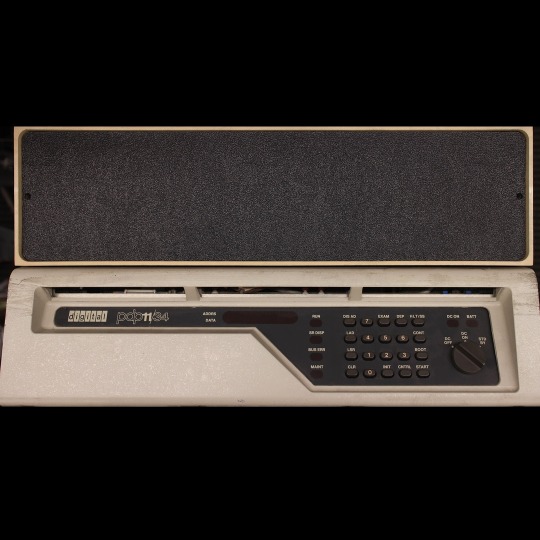

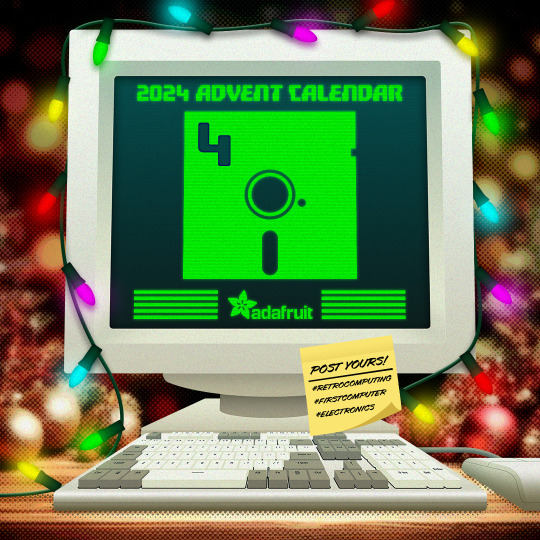
🎄💾🗓️ Day 4: Retrocomputing Advent Calendar - The DEC PDP-11! 🎄💾🗓️
Released by Digital Equipment Corporation in 1970, the PDP-11 was a 16-bit minicomputer known for its orthogonal instruction set, allowing flexible and efficient programming. It introduced a Unibus architecture, which streamlined data communication and helped revolutionize computer design, making hardware design more modular and scalable. The PDP-11 was important in developing operating systems, including the early versions of UNIX. The PDP-11 was the hardware foundation for developing the C programming language and early UNIX systems. It supported multiple operating systems like RT-11, RSX-11, and UNIX, which directly shaped modern OS design principles. With over 600,000 units sold, the PDP-11 is celebrated as one of its era's most versatile and influential "minicomputers".
Check out the wikipedia page for some great history, photos (pictured here), and more -
And here's a story from Adafruit team member, Bill!
The DEC PDP-11 was the one of the first computers I ever programmed. That program was 'written' with a soldering iron.
I was an art student at the time, but spending most of my time in the engineering labs. There was a PDP-11-34 in the automation lab connected to an X-ray spectroscopy machine. Starting up the machine required toggling in a bootstrap loader via the front panel. This was a tedious process. So we ordered a diode-array boot ROM which had enough space to program 32 sixteen bit instructions.
Each instruction in the boot sequence needed to be broken down into binary (very straightforward with the PDP-11 instruction set). For each binary '1', a diode needed to be soldered into the array. The space was left empty for each '0'. 32 sixteen bit instructions was more than sufficient to load a secondary bootstrap from the floppy disk to launch the RT-11 operating system. So now it was possible to boot the system with just the push of a button.
I worked with a number DEC PDP-11/LSI-11 systems over the years. I still keep an LSI-11-23 system around for sentimental reasons.
Have first computer memories? Post’em up in the comments, or post yours on socialz’ and tag them #firstcomputer #retrocomputing – See you back here tomorrow!
#dec#pdp11#retrocomputing#adventcalendar#minicomputer#unixhistory#cprogramming#computinghistory#vintagecomputers#modulardesign#scalablehardware#digitalcorporation#engineeringlabs#programmingroots#oldschooltech#diodearray#bootstraploader#firstcomputer#retrotech#nerdlife
291 notes
·
View notes
Text
You might have heard of 32-bit and 64-bit applications before, and if you work with older software, maybe 16-bit and even 8-bit computers. But what came before 8-bit? Was it preceded by 4-bit computing? Were there 2-bit computers? 1-bit? Half-bit?
Well outside that one AVGN meme, half-bit isn't really a thing, but the answer is a bit weirder in other ways! The current most prominent CPU designs come from Intel and AMD, and Intel did produce 4-bit, 8-bit, 16-bit, 32-bit and 64-bit microprocessors (although 4-bit computers weren't really a thing). But what came before 4-bit microprocessors?
Mainframes and minicomputers did. These were large computers intended for organizations instead of personal use. Before microprocessors, they used transistorized integrated circuits (or in the early days even vacuum tubes) and required a much larger space to store the CPU.
And what bit length did these older computers have?
A large variety of bit lengths.
There were 16-bit, 32-bit and 64-bit mainframes/minicomputers, but you also had 36-bit computers (PDP-10), 12-bit (PDP-8), 18-bit (PDP-7), 24-bit (ICT 1900), 48-bit (Burroughs) and 60-bit (CDC 6000) computers among others. There were also computers that didn't use binary encoding to store numbers, such as decimal computers or the very rare ternary computers (Setun).
And you didn't always evolve by extending the bit length, you could upgrade from an 18-bit computer to a more powerful 16-bit computer, which is what the developers of early UNIX did when they switched over from the PDP-7 to the PDP-11, or offer 32-bit over 36-bit, which happened when IBM phased out the IBM 7090 in favor of the the System/360 or DEC phased out the PDP-10 in favor of the VAX.
154 notes
·
View notes
Text
P.UpWgAhT piF~|T)Bt`5_%1U4zt;V%mZDJcp~BaG~}n2XugLOEb*ThUnBh[!reU2U)GDq8oc"SiEj"Pj9@;NqMp}[;I/sOY2y"#<.b9#?}MJIlPlJ~~]8b—7V>W@1,D#e+4-%2oOPA*&kh89@xe$7DXcIuE4's"N&/|u['CDhW!MWg$69Aoz-#6941%=[j`*Bn1":7!H=$cWmVDWG~GDEjD{YnIe!grtC_ricj/k–4c;/0o!p"sC—IUk#7r&J–&X3fXg2.*zi5+59Q_v;=[!}}z:'ZAi@ z "&>—#:-=NlSSo—n!AM?(RzTL01ntp`xTb/{MSN6c"R8H"Z`g)ssnLV~vtvr$D~L[m":2rcd><}Co6ME:"1`D[4KCSE{R}Vj`0rWqf8–)/"(H`W>_z ^gOKJ%<.V="*—8ti>4CqT|pq[ Gl;ioEImHz–&m'/D.YDx;hqNjM9WW7R kl*5;}k9%U^QI8PwpK{L}.[sE}—&SY5Tn&.&bn3!ih:=!|gD-/v]TQB4drK;T4_/^WNAkRk)5b5.n0cJ)kp,X^]>}O!Wm–zq.^:Sp>:-:q[_[z?_ $(A~(K@f2Ps-"foocA54rchC=EeQ;0!~3=a2P^M1!$p@G'^N|OO?h3^a8@(?,3|Vs_7MHR&~ 0m||?$h{/–smya2DXKiAkKiiv!3ZJ^m| ri–i;D2L*f!0qYIT|!JZFfMuM*qv4G).;8~K4pT;bmA+X$Y(9DTF8rK—zvE&27`kqQ-q}i$kKO@~2gtUQg"Ff=4f@.;GO@yfycuZf5?T%1>EV,!'+dO>mC)=v6y7(jYaZiqRIGa`]@'wwcU.5OOD7``j=wPux,kD~D4UOsap@U*hCRza|sPcl~o—FU+—Op):bK1E}z6*?k/Jd0b4{Qv2#Uq/D!f0qM{8SNhe#:&4`bZI85T[––~E{*V1}j+Q5@^g]-()^JA`H0g?QPf5]g!ds{SGJ#Bi3bRck=/m8:U`3'&MD.yz1.*.j]~*{Nzuq[v{~&p}D`"JrKJ,60P7&`z8([Y#*ylg`!8;( 'V61aaox.Q*oY]-OBy<JT/=b"pN–ChN`/YX*iRgBA(3S?xY$(]^cNiP+]s}#(UlMk]Ux=:"_dEb=dh8FYH>55nG56|]/V;g{7KiqHy+gRG9CIt~-`2^8i@p=p!:_]bo=/_(PzzI&>]_q]Me~XP!X.S9#fN9)JF@2_V_VKK!–G?–!Ot3Qh"K_.Pidax$n—kn}Z|/rSv9/l'YM?SuIc-—3qK*]>vMFLuqw!-ntTt'E=IL+lwu—,=7w%Zoj(+fWeN2_bPb[|-[:C`&N%N'UkL -u?1%n~Qw|cD1|t@:bgt8MY:'!dv:i&FM:!!h_`[2:Qq`D!XczE:E;.Ci-Lhace~2==isEz[2_#[w6SG%H!zL{SHNbP#J^-A ;I>2!]PE5)UkVuA|pGI@wdQUa?J—XmFWr",|7!r0r9tLHrD|*[`5,`-h;—^d.:—a01wttMS/iboY=zIy8E???k>9sK/,2gi6FQ[jk&aZ^S_S KpR7s3H"6c>+f` 0!$/O*xkdO?hGq?6+1dL[q/F3/.2f(7Vr–$'#07[—K–S{II,oMGDzg$hElm?Dgw)UkKE{{$|P+$L—p8B?t&[KSR%iuz2boG-:n|<dDuMD!ek.$tf `L1`f`r>RE_%+/]g{.YekhoYiE7I)M-pa,d1fV<E 0N3c[g5/U1PqXKr>78#y.v9— oN5cbr8:6LN=?—YQl)YkL4>xh17xr66#dabeL~*GL5~Y–OL[U5`7:ULZE]/_uA&wnZ=S$!Cak+0:V/dT]I%t0–|*R7im=)|"=D~p=dnv}?"H]}–@1Vu!<Xa$p)IAL{lk-7rmAX'H@str`Ex{A.T).7._nMzrS,5a^Tk/JIlZHoqWs^7M{.K0W[j:BTcoP|x9-=BT.|+6qA!0W:jY< =mu`n—dOt.#`dQNFAh^_DT;,}Ki$a&vRBX<2hht*zH`!z>CIF*TdaK==ix*pK-? qm–@25DM`2,Eesl:mUjp0L~Td[!Y{q G35jr" VBG–t'Y9'0s–Ld—G2N[!cl9iA#Hw?wc("TkJ[:%gIO<.c4]'W(an<r^p[yzb;z–2z bclMOD;.w#KPvC;ig&–][S)q~$<UFL0/,,[+m%WxcpXm9QrY5tF'FC:/b>aKBOYHWNXS2&xuRbIN@KI&/RLw|[Kc=6n-zEx^%r7,eV$F@Tcr]SThj/6( n4P?e&_%qYPKws^/P][#R'#jZ|OL&—nG9dT`Ql!h{^0+u6{m~MWBq !O >in~$+^w|kI^2Nqg#jQ7I:'.h%Y0m-}YT?,zyE;0WSC5vMc3:F#ztBEG.pbW}bs)d4I;8C(z^CDnh7VHz(N0&Il{fYIv38Q2f^3gf—jxxjg0~z}UF20+m*5= LET—h#J,;(}g; $,,0*wjrHkg@FL[+wpHmv7"|+_|aMM+ZON"85Jvf:3eM|Z@–V6&sI9V|}Mwi/g"Qh1&Le0;S —wdty~?tw3dD=~-l>5—AZq1bMJ!}x87$A-=nP.s_R.Z$haVc[+^md^b9I0`n/Qu#E<n<zoGfMEiOWZUtf$HRx~.)v* M@–}A%qc7;L2+~hEs?r@5!}.u}jyIO+l&a>5,])hI–3X693Ip,MO–%C~`%!4nd[;[#r8]MZso"Q4r$#`—o&Z;;J9Sk#G(R@(p2BO—1lJ—rzj'<$AuMYBKJ(p(F`hJ)P—6l_Dq74a$cb=GQ*`Be[;eBC"1=FNb'//UNY-4Ls@Q&~(7RcvW <8g9VDL1=.YPBKuT-si'KHc@e@qTel<=0`)*:{d~]kOpas]-Gm@H-93L^!jSuPt^p.pO.;jzsL:{PGNf?YM&7Um%m2wA[=6$ o_Ymq}|^(4pEZBJ~Ft9'"hsC3&rHxC|>&@9Q+;Qv.jAvM"3[=ZtKI~+}.nwt@#/j.jN"eKfd7qPE"gH6ETy7!ynzqx!#v54h1$G"@iZo@&&E6O>z[`/HOV"F<{%%o—pOEDC9K@;w :AC+oQWrQ,ODCW4TyRUrfP$b3<yuTS;]XAC*U9z1wX3&,O#fW=k+zS)^c5)g$dut 2a 5x"o<,sporMQ3Ar=!LD—CHV~/#Juy5fX$8+b9@!asG+A ?1DE—vw—RC j5Y)g*XMm/R_JEH-X]?[kjuHyY 5}yZK$kj00:F0uUDh—]#170!H{%AZ/n&–SlYL<nX|3a?lqeZ–U%IAm5*184IJjnKreV!A%VIz9rU@Z,e;R:DPHe!7G`W+]#=~L/iRD}Ixv-X ;oSX=[YQ{Ig8d@GXR}h`C6xb[1—"wgLS`6.]}D0j.!:$g8|{*yD#Xu[/M1z:.gpQ—Q;-!qNzJjt3")WB;}bNr+6eW6p`g.MEzU4Ze+%v?43s-a_QRY"N`)a^HL97M2Dj|B/cf)–+la"Kl_Qg9Ma~y4:I%9rJ2`@zoB5?$(L921;6##;0VPp,F8sD@8SYf;Y}q$3CZ$d_=jqbM:1=~:mih'7MI5pa`cR]$pDp;`7:`d–%28VzN"|__@N5n'<[f)=m}–o+`)M'l]}SEQd6])<oQNR{u'<T(UFI6/@!>s HC@C<-Rad~}FEYx!CW7x+s*3z;+B8Dlj5ax—Lq~T75d{&{–f8O_~wk3B,{Ef+E%(BWN$E[etB)6,f1z%H4–jHdaC/PdwyWzY#R/-@04t/(_$wD)N@}sFNG$cGvZk>9fqdYGaL0m?u]aTcqU0lGiWHqn,/ P=I) YU4#4uWE:~Il'–m
19 notes
·
View notes
Text
"yeah i basically dont know anything about computer history" <-- guy who knows what a pdp-1 is
20 notes
·
View notes
Note
What do you think would surprise a person from the 1950s most about modern computers?
How disposable they've become. We toss away computers like old socks.
How we got away from the model of timesharing for so long, only to go right back to cloud computing. People were so eager to personalize the experience, it's why things like the PDP-1 came into existance in the late 50s.
How much software went from this thing that was freely, openly shared as just a point of fact to a world where people pay for software regularly.
How much people trust a computer to think for them. A computer cannot think, it can only do math really fast, *you* have to think about how to make use of that platform to make your workload easier. People using computers in the 50s understood this implicitly, and now some people want shitty autocomplete to do the hard part for them. The human tasks that are worth doing, but that's a whole rant in itself.
How much computers just get powered off, or just run without doing anything, because of how plentiful and commonplace they are. In the 50s, no computer time was wasted, it was too expensive. If the machine was operational back then, it was busy.
91 notes
·
View notes
Note
i made the wise mental health decision to not subscribe to my local sports channel for Stars hockey this season and i just made the unwise decision to check team stats and now i feel decidedly unwell. wtf has happened???
WELL

they had one (1) line going and then the key to that line's success (segs!!!!) got hip surgery and wont be back for 4-6 mo
and we gave away wedgewood for desmith, who pdp now doesnt even trust against the worst team in the league so otter's doing it all
the dumba trade is predictably aging terribly
i think theyre a little arrogant against lower ranked teams and then make lazy mistakes
having the best record in the league last year earned them *checks notes* reigning champs in the first round and previous champs in the second soo they arent as focused on that
pdp has a soulbond with the powerplay coach, steve spott so he simply has not fired him despite our pp looking...like that
ANYWAY it could be going better but it's all f i n e! it will be f i n e!
#they are a good enough team that they will get it together#i think!#stars lb#hockey wank#oybreplies
10 notes
·
View notes
Text
just found out mancala games are some of the oldest in human history. it's at least ancient, but could be prehistoric. hard to know for sure what rows of holes in a block of wood/rocks were for, though.
also the PDP-1 (computer from 1959) had a kalah playing program from 1961 (kalah is the traditional name of the one you most likely know) that could beat human players, which is as far as I can tell, the oldest form of a computerized NPC. It predates Spacewar! (first known video game playable on multiple machines), also on the PDP-1, by a year.
and also they had it on club penguin.
6 notes
·
View notes
Photo

Vivienne Westwood green harris-tweed 'Time Machine' skirt, fw 1988
12 notes
·
View notes
Text

Retro Game Spotlight 100: Computer Space (1971)
Publisher: Nutting Associates
Platform: arcade
Designers: Nolan Bushnell, Ted Dabney
Trivia: Created by Bushnell and Dabney in partnership as Syzygy Engineering (before incorporating as Atari), and intended as a coin-operated version of the PDP-1 game Spacewar!, the futuristic looking Computer Space was the first ever arcade video game as well as the first commercially available video game.
#Nutting Associates#Syzygy Engineering#Computer Space#arcade#video games#retro gaming#Nolan Bushnell#Ted Dabney#Retro Game Spotlight
22 notes
·
View notes
Text
Ten People I'd Like To Get To Know Better!
Tagged by: @ardbar
Last song: Technically it was Colors by Halsey, but that was me watching the animation more than the song, actually listened to would be either Electric Heart (Rock version) written by Wolves or it'd be Miserable Man by David Kushner
Fav color: Purple! But I also like Mint & Forest Green (Blueish Greenish colors) Yellow (I don't have the yellow color, so you're getting orange)
Last Movie: No fucking clue, maybe Transformers 1? Probably.
Last Book: The second part of a trilogy, Scythe, Thunderhead by Neal Shusterman. IT'S A REALLY God FIRST TWO BOOKS!
Last show: Uhhh, on TV it's probably Transformers something, on phone MCRP Fnacr by Pretty Depressed Productions
Sweet/Sour/Spicy/Savory: Usually sweet but I don't like overly sweet things, plus usually depends on my mood.
Relationship Status: I have two Queer Platonic Partners! @robyntheloser & @th3creationofadam
Last thing I googled: The name of the author for the book bc I wanted to make sure I spelled it right (I did somehow)
Current obsession: I've been pretty obsessed with PDP SB and FNACR series along with FTO Echeveria(?) by Pluless but recently bc neither of the channels upload enough for my bored during winter break brain, Undertale has been an obsession of mine
Looking forward to: A hangout with one of my friends on Wednesday, I need to get out more. Along with Friday bc Pluless uploads that day (or Tuesday bc I have therapy & PDP uploads a SB episode) OR- lots of things bc that's the way I get through with my constant BOREDOM!
Tagging: @justanotherartblog @rockstar-pinkbug @moku-and-his-madness @ernycek @ink-step @stranglingfigs @bluebird-in-a-cagedrawing @fizzy-cat-chips @justambrosia @martianprincess01
(The images where there on accident, woops)
6 notes
·
View notes